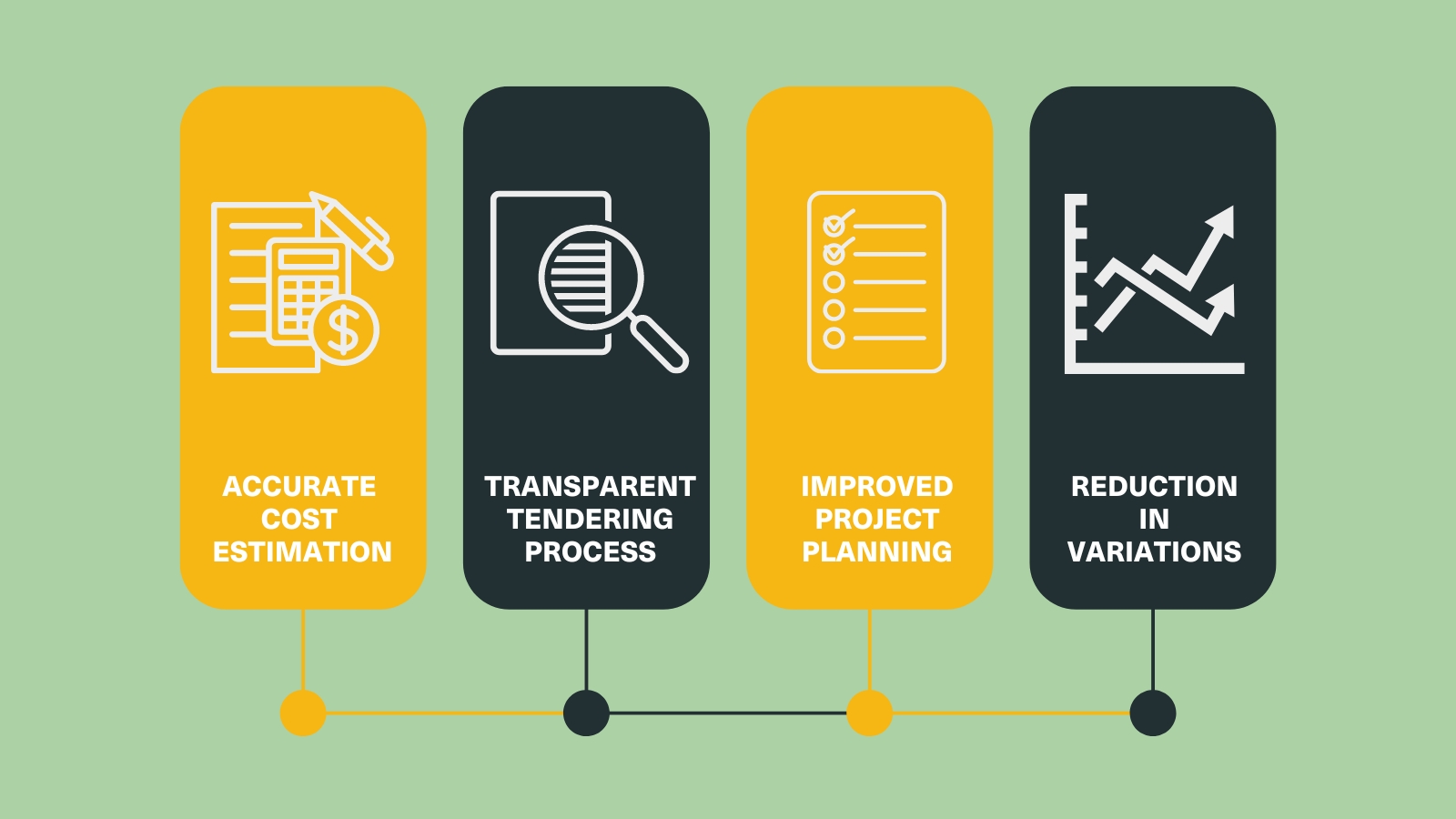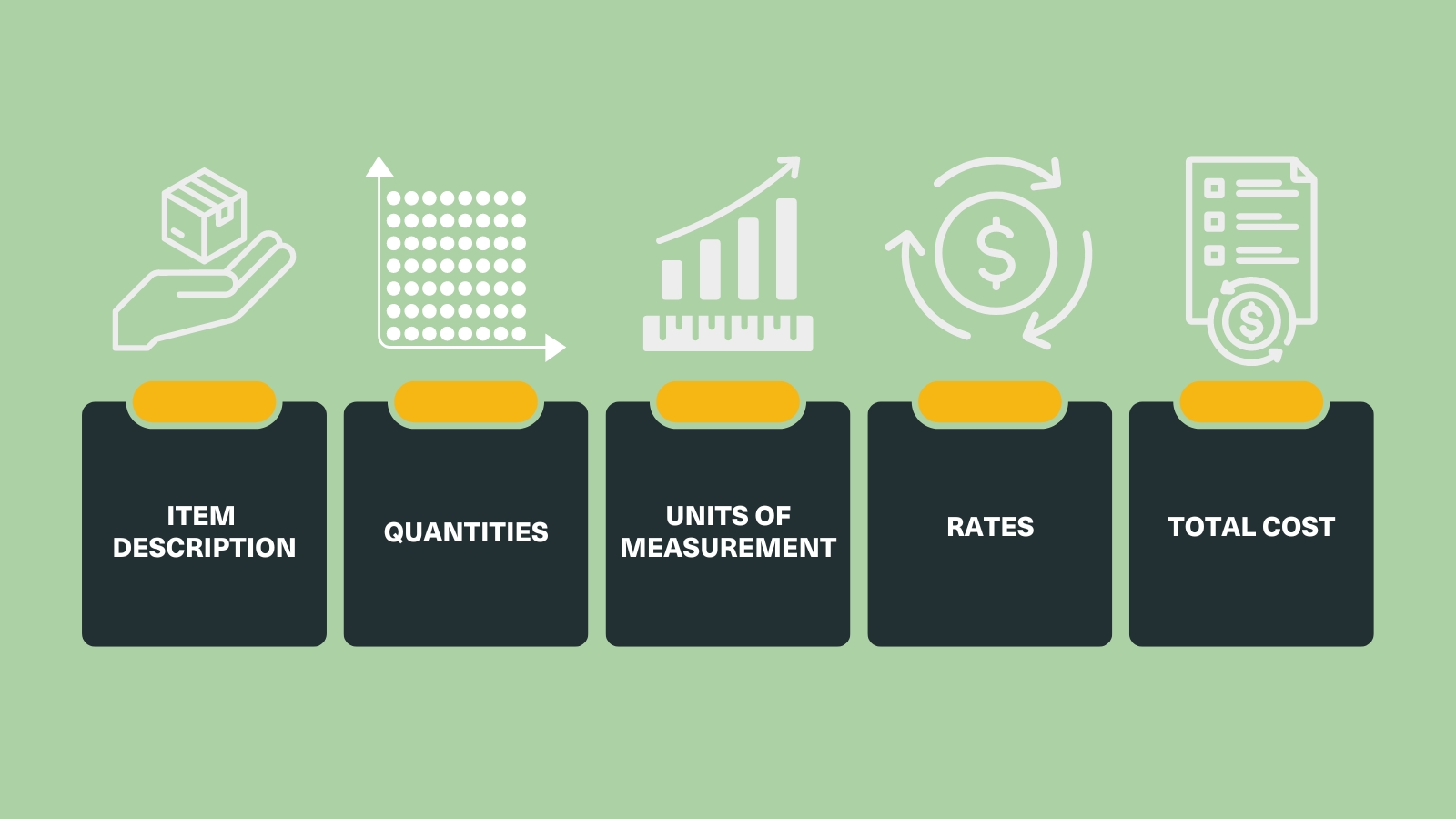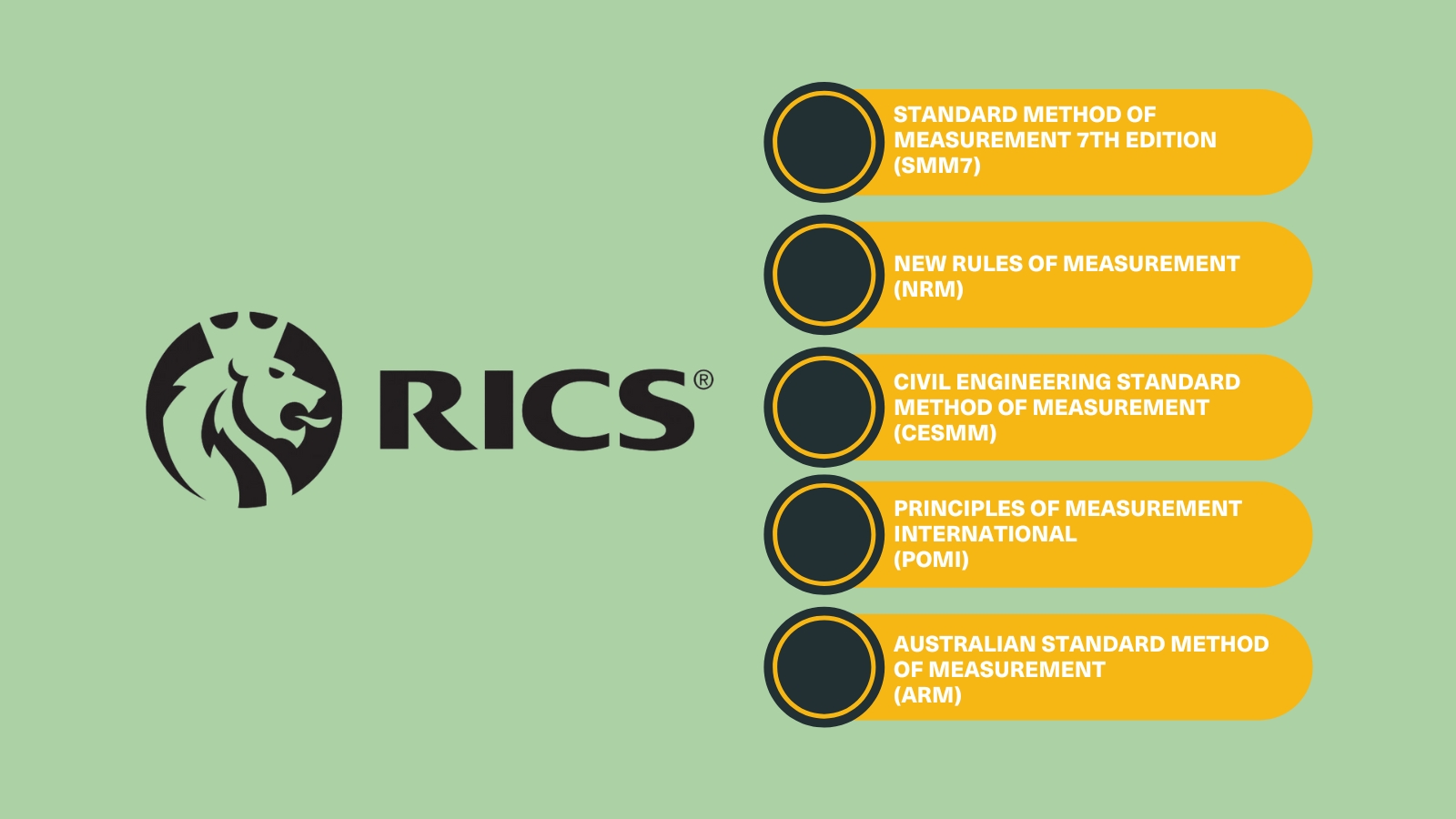Transforming architectural dreams into reality on time and within budget requires meticulous planning, down to the last tin of paint and box of screws — this is where the bill of quantities (aka BOQ or BQ) comes in.
The BOQ is vital to the construction process of any large building or development. This document details all the quantities of materials, parts, and labour required, as well as their associated costs, for a project to reach fruition.
Key Benefits of BOQ
There are several significant advantages associated with bills of quantities, such as:
- More accurate cost estimation and budgeting: A detailed breakdown of all materials, labour, and equipment required for a project, enables precise cost estimation and reduces the risk of unforeseen expenses and financial overruns.
- Transparent tendering process: During the tendering phase, a BOQ ensures transparency and fairness by offering all bidders a consistent basis for pricing, helping foster a competitive bidding environment, and potentially leading to cost savings.
- Improved project planning and scheduling: The detailed nature of a BOQ aids project managers in allocating resources more effectively, ensuring their timely procurement and avoiding delays.
- Reduction in disputes and variations: The BOQ serves as a contractual document outlining the scope of work, so any deviations or changes can be easily identified and managed, ensuring all parties are on the same page and mitigating conflicts.
- Accurate progress tracking and payment management: A BOQ enables project managers to monitor actual work being completed and materials being used, so payments are made in alignment with the progress, helping maintain cash flow and financial accountability.
- Quality assurance and control: With a BOQ, contractors and suppliers are held accountable to predefined standards, ensuring that the materials and workmanship meet the required quality.
- Basis for project audits and reviews: The comprehensive documentation provided by a BOQ provides a clear trail of all project activities, making it easier to analyse performance, identify areas for improvement, and implement best practices in future projects.

There are several reasons why commissioning the bill of quantities services from a qualified quantity surveyor is crucial to easing ambitious ideas into reality. This article explains what these reasons are and how to ensure that the BOQ received is accurate and correct.
Why an Accurate Bill of Quantities is Vital
An accurate BOQ is one of the cornerstones of planning for any project. When prepared and used correctly, the BOQ empowers the client by helping them stay in control of their build.
Here’s why a precise, correct BOQ is indispensable:
1. It helps establish a clear understanding of the scope and costs of a project.
The BOQ document is designed to provide all relevant parties with accurate knowledge of the specific materials needed to complete a project from start to finish. The BOQ will list these quantities using detailed and precise measurements of volume, weight, area, or time. Depending on the stage of project design, there are different types of bill of quantities, including:
- Firm BOQ: This finalised itemised bill of quantities is made when all aspects of the building design are complete.
- Approximate, preliminary, notional or provisional BOQ: This can be prepared when there are still some project details that need to be finalised; however, they do not provide the same accuracy as a firm and itemised bill of quantities.
The BOQ is best completed by an independent quantity surveyor, who can use their knowledge and experience to create an accurate and independent estimate of the quantities of materials and labour that will be required to move forward with the project.
2. It aids in the provision of more realistic and thorough bids from contractors.
The detailed breakdown of materials required to realise the design vision means that contractors bidding to complete the work can provide the client with a more accurate estimation of the cost. All bidders can provide a price for the same materials and labour, making comparisons between potential contractors much easier.
The comprehensive information provided by bidders means that clients can be confident that each bid is complete and thorough and go on to make an informed decision. It is much easier to choose a contractor whose bid aligns with the vision and budget of the project when an accurate BOQ is used.
3. It informs cost control and keeps costs in check.
Inevitably, fluctuations in the costs of material and labour means that there is likely to be some movement in the final cost of the project. However, a BOQ can still act as a firm benchmark through the project.
Clients can easily see what proportion of the costs have been spent on the project already and what to budget for in the next stage. This helps them allocate cash flow appropriately and track the progress of assembly. Referring to the BOQ frequently can help keep costs in check.
What Should a Bill of Quantities Include?
The format of a BOQ varies from provider to provider. However, it typically includes the following components to be accurate, informative and comprehensive enough to fulfil the functions discussed above.

- Item Description: Each work item is described in detail, specifying the type, quality, and standards of materials and workmanship expected, providing clear instructions to contractors.
- Quantities: This specifies the numerical amount of a specified unit required for each item or activity listed. It plays a vital role in defining the scope, estimating costs, planning procurement, managing resources, and ensuring contractual clarity throughout the project lifecycle.
- Unit of Measurement: This defines how each item is measured (e.g., metres, square metres, tonnes), ensuring consistency and precision in quantifying resources and costs.
- Rates: The cost per unit of measurement for each item is provided, derived from market rates or contractor estimates, which are crucial for pricing and budgeting.
- Total Cost: Calculated by multiplying the quantities by the rates, this gives the total estimated cost for each item, contributing to the overall project budget.
The Role of Standard Methods of Measurement (SMM) in BOQ
Standard methods of measurement (SMM) are established clear-cut guidelines used in the construction industry to quantify and describe the items of work necessary for the completion of a construction project. These standards ensure consistency, accuracy, and clarity in the preparation of bills of quantities, facilitating transparent and fair tendering processes.

There are different types of SMMs used in construction, including:
- Standard Method of Measurement 7th Edition (SMM7): Primarily used in the UK and introduced by the Royal Institute of Chartered Surveyors (RICS), SMM7 was widely adopted for building works. It covers the rules for measuring a wide range of construction activities and items, providing detailed guidance for the preparation of BOQ.
- New Rules of Measurement (NRM): Also introduced by the RICS, NRM is the successor to SMM7, NRM is divided into three parts: NRM1 (Order of cost estimating and cost planning for capital building works), NRM2 (Detailed measurement for building works), and NRM3 (Order of cost estimating and cost planning for building maintenance works).
- Civil Engineering Standard Method of Measurement (CESMM): Widely used for civil engineering projects, CESMM provides rules for measuring and describing civil engineering works, ensuring consistency and accuracy in BOQ for infrastructure projects.
- Principles of Measurement International (POMI): Developed by the International Federation of Consulting Engineers (FIDIC), POMI provides a set of measurement guidelines applicable internationally, facilitating the preparation of BOQ across different countries and regions.
- Australian Standard Method of Measurement(ARM): Used in Australia, ARM sets out the rules for measuring and describing building works, ensuring consistency and clarity in BOQ within the Australian construction industry.
How the Different SMMs Compare
While the different types of SMMs have the same primary objective, there are also certain distinctions to be made.
For example, SMM7 is specific to building works in the UK, while CESMM is mainly tailored for civil engineering projects. NRM offers a more comprehensive approach by covering both building and maintenance works. POMI provides an international perspective, making it suitable for global projects, whereas ARM is focused on the Australian market. ARM and SMM7 are region-specific, reflecting local construction practices and regulations. POMI is designed to be adaptable across different regions, promoting international consistency.
Both SMM7 and CESMM provide detailed and specific guidelines for measurement, whereas NRM offers a broader framework encompassing various stages of cost estimation and planning. POMI aims for simplicity and broad applicability, which may result in less detailed guidance compared to national standards.
How Do You Ensure an Accurate Bill of Quantities?
While the format of a BOQ may look relatively simple, creating one is an intricate process that requires expertise, experience and a huge amount of diligence. Here’s how it should be prepared to ensure correctness.
- By using a professional BOQ service: Drawing on professional experience, expertise, and advice is always recommended for this complex task. Construction consultants have been using tried and tested tools and industry-standard methods to complete the most accurate BOQ possible.
- By supplying accurate drawings: To quantify costs correctly, accurate drawings, and specifications must be used.
- By communicating effectively with all relevant parties: It’s vital that all adjustments and updates to a project are communicated effectively and in a timely manner. The BOQ should be considered a collaborative effort, so all changes to project goals, parameters, budget, and any other necessary information should be reviewed by all involved parties.
A meticulously prepared bill of quantities lays the groundwork for successful project execution, empowering clients to realise their architectural visions within budgetary confines.
Stonehaven’s Bill of Quantities Services
Bill of quantities is a core specialism of Stonehaven. We handle the complexities of quantity surveying with precision and speed, utilising our expertise and experience alongside the very latest technologies.
By choosing Stonehaven, you can be assured that your BOQs will be accurate, timely, cost-efficient and prepared to the relevant ISO standards and best practices. Let us help you with efficient project management: get in contact today








